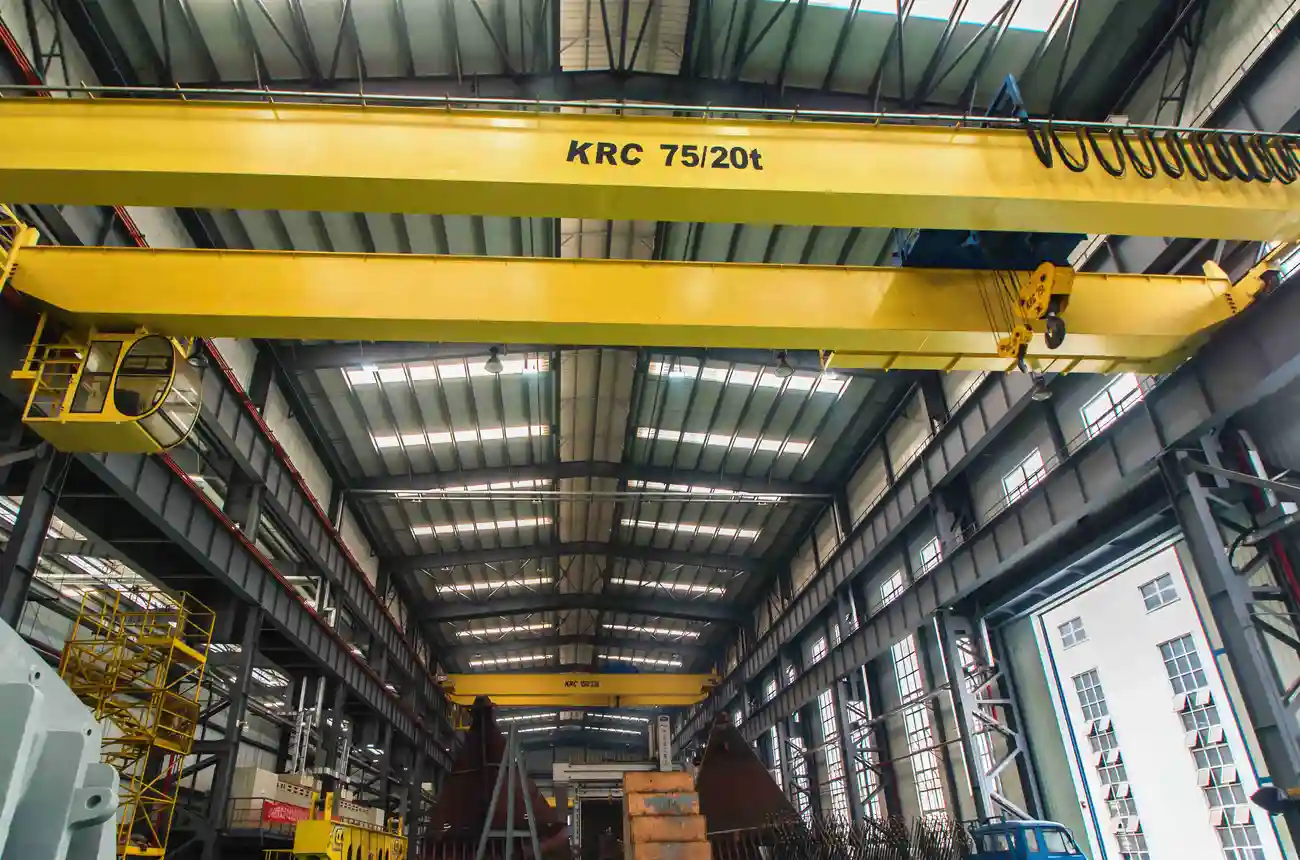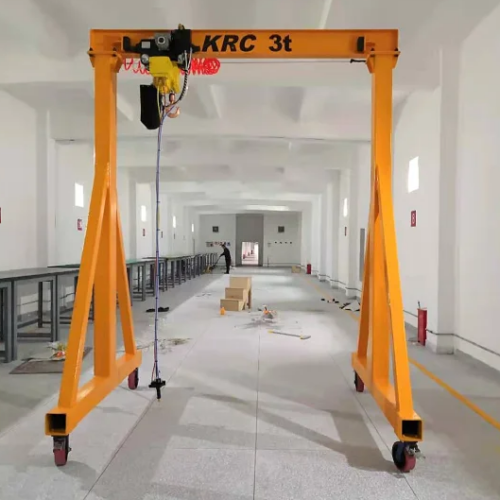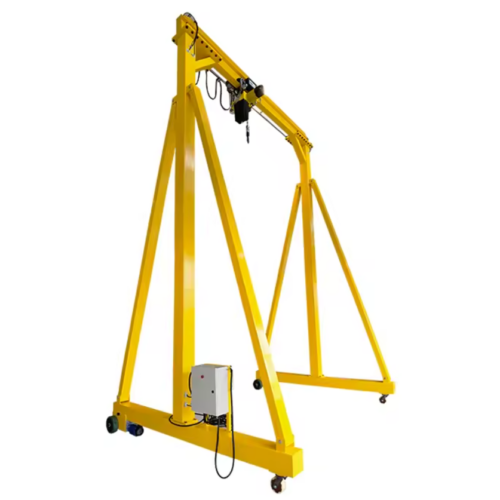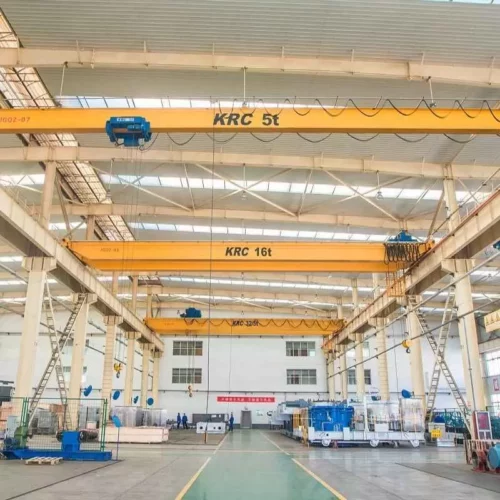15 ton gantry crane Safety Certifications
A 15-ton gantry crane is a significant piece of equipment used in various industrial settings, including construction, manufacturing, and shipping. Ensuring its safe operation requires compliance with multiple safety certifications and standards. Below are some critical certifications and guidelines to consider:
1. OSHA (Occupational Safety and Health Administration): OSHA provides safety regulations in the U.S. for the operation and maintenance of cranes. Compliance with OSHA standards ensures the crane is safe for both operators and nearby workers.
2. ASME B30.2: This is the American Society of Mechanical Engineers’ standard for overhead and gantry cranes. It covers construction, installation, inspection, testing, maintenance, and operation, ensuring that the crane adheres to industry safety norms.
3. CMAA (Crane Manufacturers Association of America) Specification No. 70: This standard provides detailed guidelines for the design and manufacturing of electric overhead traveling cranes, including gantry cranes. Adhering to this specification ensures structural safety and reliable performance.
4. EN 15011 (European Standard): For cranes used in Europe, EN 15011 is a crucial standard. It outlines the design, construction, and safety requirements for bridge and gantry cranes.
5. ISO 9001 & ISO 14001: While ISO 9001 focuses on quality management systems, ensuring that the crane is manufactured under stringent quality control practices, ISO 14001 emphasizes environmental management, ensuring reduced environmental impact during manufacture and operation.
6. CSA B167-08: Canada’s standard for cranes, this regulation ensures safe design, construction, installation, maintenance, and use, providing another layer of assurance for safety compliance.
7. LOLER (Lifting Operations and Lifting Equipment Regulations): In the UK, LOLER governs the safe use of lifting equipment, ensuring equipment like gantry cranes are installed and maintained correctly, and operate safely.
Adhering to these certifications not only ensures the safe operation of a 15-ton gantry crane but also enhances productivity by minimizing downtime due to accidents or mechanical failures.
List Reference Technical Parameters of “15 ton gantry crane”
A 15-ton gantry crane is a robust and versatile piece of lifting equipment commonly used in various industrial applications. Here are the reference technical parameters of a 15-ton gantry crane:
1. Lifting Capacity: 15 tons (metric)
2. Span Length: Typically ranges from 5 to 35 meters, depending on the specific model and application requirements.
3. Lifting Height: Can vary, commonly between 6 to 12 meters.
4. Crane Classification: Usually classified according to FEM (European Federation of Materials Handling) standards or AISC (American Institute of Steel Construction).
5. Speed Parameters:
– Hoisting Speed: Generally between 3 to 10 meters per minute (variable speed options may be available)
– Cross Travel Speed: Typically ranges from 2 to 20 meters per minute.
– Long Travel Speed: Generally between 20 to 40 meters per minute.
6. Control System: Options may include pendant control, remote radio control, or cabin control, with variable frequency drive (VFD) for precise operation.
7. Power Supply: Usually takes standard 3-phase AC supply; voltage can be 220V/380V/415V, 50/60 Hz, depending on local standards.
8. Duty Class/Working Hours: Defined by usage such as A3 (light duty), A5 (moderate duty), or A7 (heavy duty).
9. Structure Type: Either single girder or double girder, constructed of high-tensile steel for durability and strength.
10. Wheel Type: Often equipped with grooved wheels for rail travel, with options for rubber tyred or trackless operation.
11. Safety Features: Includes overload protection, limit switches, emergency stop system, buffer, and anti-collision devices.
12. Ambient Conditions: Typically designed to operate in temperatures from -20°C to 40°C, with special models available for harsher environments.
13. Standards Compliance: Adheres to relevant industry standards such as ISO, ASME, and ANSI for safety and performance.
These parameters provide a general overview, and specific configurations may vary based on manufacturer and application needs.
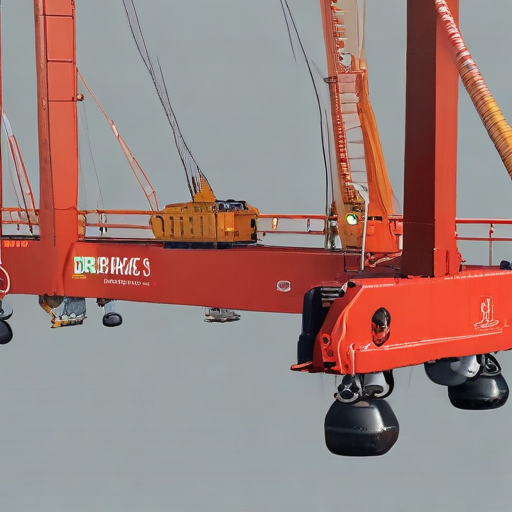
List Product features of “15 ton gantry crane”
Certainly! Here are the key product features of a 15-ton gantry crane:
1. Load Capacity:
– Capable of lifting and maneuvering loads up to 15 tons (30,000 lbs).
2. Structure and Build:
– Robust steel frame ensuring high durability and stability.
– Available in both single and double girder configurations.
– Typically features a corrosion-resistant coating for longevity.
3. Span and Height:
– Adjustable span and height depending on the specific model and application.
– Can accommodate wide operational areas.
4. Mobility Options:
– Available in fixed, semi-mobile, and fully mobile designs.
– Equipped with caster wheels or rail-mounted options for easy repositioning within a workspace.
5. Hoisting Mechanism:
– High-performance hoist system with precise control for lifting and lowering heavy loads.
– Can be equipped with electric chain or wire rope hoists.
6. Controls and Automation:
– Options for manual, pendant, or wireless remote controls.
– Advanced models may include programmable logic controllers (PLCs) for automated operations.
7. Safety Features:
– Emergency stop buttons and overload protection systems.
– Limit switches to prevent over-travel and ensure safe operation.
– Anti-collision devices in mobile models.
8. Customization and Accessories:
– Can be customized with additional features like variable speed controls, specialized hooks, and lifting attachments.
– Often includes lighting, warning alarms, and other safety accessories.
9. Ease of Assembly:
– Designed for relatively straightforward assembly and installation.
– Some models feature modular components for easier transport and setup.
10. Applications:
– Ideal for use in warehouses, manufacturing plants, construction sites, and shipyards.
– Suitable for various industrial applications including material handling, loading, and unloading tasks.
These features ensure that a 15-ton gantry crane is versatile, safe, and efficient for heavy-duty lifting and material handling tasks across various industries.
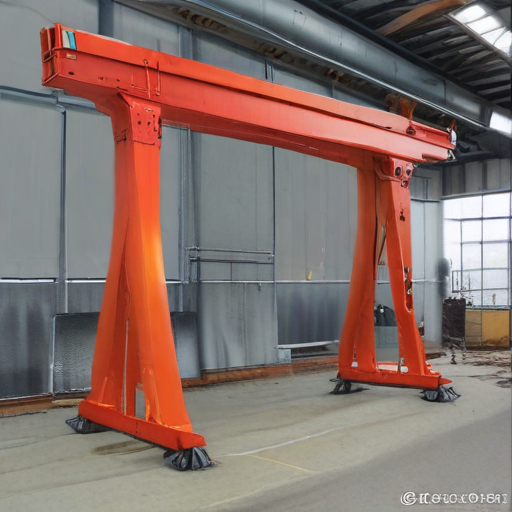
List Application of “15 ton gantry crane”
A 15-ton gantry crane is a versatile piece of industrial equipment used in various applications across multiple sectors due to its ability to lift and transport heavy loads efficiently. Below are some primary uses:
1. Construction Sites: Vital for moving large materials like steel beams, concrete sections, and heavy machinery. It facilitates the installation and assembly of significant structures.
2. Warehousing and Storage: Used for stacking and positioning large, heavy items in warehouses, optimizing space and improving inventory management.
3. Manufacturing Plants: Common in assembly lines and production floors where heavy components need precision positioning and movement. It aids in tasks like lifting engines, large molds, and heavy machinery parts.
4. Shipyards and Ports: Essential for loading and unloading cargo, including heavy containers and parts of ships. These cranes streamline material handling and improve turnaround times.
5. Rail Yards: Utilized to transfer heavy loads, such as rail cars and large cargo, facilitating efficient logistics and better utilization of railway resources.
6. Mining Operations: Assists in the handling of large mining equipment and heavy materials, contributing to operational efficiency and safety.
7. Wind Energy Installations: Used to assemble and maintain large wind turbines. The crane helps in lifting heavy parts such as nacelles, blades, and tower sections.
8. Aerospace Industry: Supports the assembly and maintenance of large aircraft components, ensuring precise and safe handling of critical parts.
9. Automotive Industry: Integral in processes such as die handling, where large dies must be moved for stamping parts.
10. Power Plants: Critical for moving heavy equipment parts and maintenance tools, contributing to the efficient operation of the plant.
Overall, a 15-ton gantry crane enhances operational efficiency, safety, and precision across diverse industrial applications.
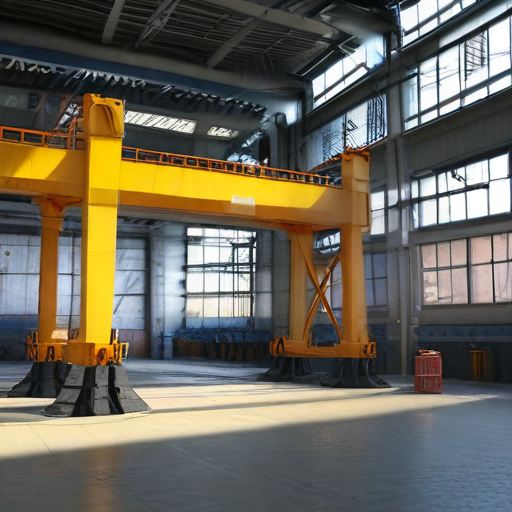
List Various Types of “15 ton gantry crane”
A 15-ton gantry crane is a versatile piece of lifting equipment typically used in industrial environments for moving heavy loads. Various types are designed to cater to specific operational requirements:
1. Single Girder Gantry Crane:
– Description: Features a single girder or beam.
– Usage: Ideal for light to moderate lifting, generally used in warehouses, maintenance, and assembly operations.
2. Double Girder Gantry Crane:
– Description: Incorporates two girders for increased strength and stability.
– Usage: Suitable for heavy lifting and larger spans, common in shipping yards, large manufacturing facilities, and construction sites.
3. Semi-Gantry Crane:
– Description: One side of the gantry runs on a ground rail, while the other side runs on an elevated rail.
– Usage: Used when space is restricted or when one side needs to accommodate other moving equipment.
4. Full Gantry Crane:
– Description: Stands on four legs and moves along track rails on the ground.
– Usage: Employed in open yards, shipyards, and heavy-duty outdoor applications.
5. Portable Gantry Crane:
– Description: Smaller and can be moved, dismantled, and reassembled as needed.
– Usage: Best for less intensive use and lighter operational needs, often found in small workshops or businesses.
6. Adjustable Gantry Crane:
– Description: Height and span can be adjusted.
– Usage: Suitable for versatile applications where space constraints vary or where the height/floor clearance needs frequent changes.
7. Truss Gantry Crane:
– Description: Employs a truss structure for reduced weight and increased wind resistance.
– Usage: Commonly used in outdoor settings where stronger wind resistance is needed.
8. Heavy-Duty Gantry Crane:
– Description: Built robustly for extremely heavy loads.
– Usage: Often utilized in steel mills, large-scale production, and heavy construction.
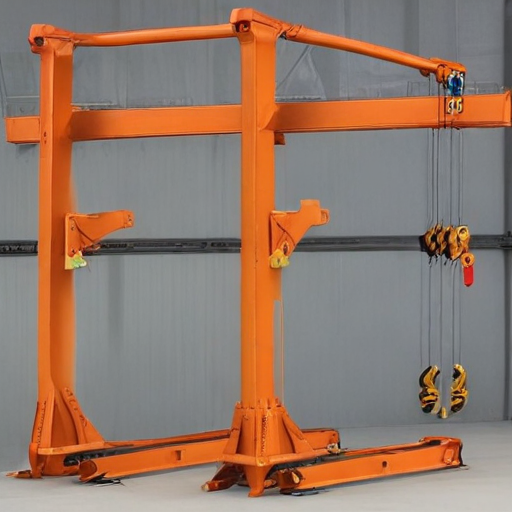
15 ton gantry crane Accessories Upgrades and Custom Manufacturing Options
Enhancing the functionality and performance of a 15-ton gantry crane can be achieved through a variety of accessories, upgrades, and custom manufacturing options. Below are some of the key choices available:
1. Wireless Remote Controls: For improved safety and convenience, wireless remote controls can allow operators to manage crane operations from a safe distance.
2. Variable Frequency Drives (VFDs): These facilitate smoother crane and hoist movements, offering better control over load handling and reducing mechanical stress.
3. Anti-Collision Systems: Advanced sensors can be installed to prevent collisions between the crane and other structures or objects, enhancing safety.
4. Load Weighing Systems: Integrated load cells can measure the weight of the load being lifted, providing real-time data and preventing overloading.
5. Automated Systems: Incorporating automation can optimize operational efficiency, particularly in repetitive tasks or hazardous environments.
6. Additional Lifting Attachments: Custom lifting fixtures such as spreader beams, C-hooks, and magnetic lifters can be designed for specific application needs.
7. Weatherproofing and Environmental Controls: For cranes exposed to harsh environments, options like weatherproof coatings and climate control systems for the operator cabin can be crucial.
8. Safety Features: Upgrades such as emergency stop systems, overload protection devices, and advanced braking systems can significantly enhance safety.
9. Energy Efficient Motors: Installing motors with higher energy efficiency can reduce power consumption and operational costs.
10. Custom Span and Height Adjustments: Tailored dimensions in terms of span and lifting height can be engineered to suit particular operational requirements.
11. Improved Mobility Options: Enhanced wheel systems, including rubber tires for smoother movement on specific surfaces, can provide better operational flexibility.
By selecting the right combination of these accessories and custom options, a 15-ton gantry crane can be fine-tuned to meet specific operational requirements, ensuring enhanced performance, safety, and efficiency.
List Quality Control and The Manufacturing Process of “15 ton gantry crane”
Quality Control in 15 Ton Gantry Crane Manufacturing
1. Material Inspection: High-standard raw materials undergo compositional and structural testing to ensure durability.
2. Component Testing: Individual components like motors, gears, and cables are tested for functionality.
3. Fabrication Checks: Welds and metalworks are inspected using non-destructive testing methods (NDT) like ultrasonic or magnetic particle testing to detect imperfections.
4. Assembly Verification: Sub-assemblies, such as the hoist and trolley systems, are inspected for correct assembly and alignment.
5. Load Testing: Cranes are subjected to load tests exceeding their rated capacity to ensure performance under heavy loads.
6. Software Diagnostics: For cranes with advanced control systems, the software is tested for reliability, user interface, and failsafe mechanisms.
7. Final Inspection: A thorough review, including operational tests, noise tests, and safety feature validations, is conducted before delivery.
Manufacturing Process of a 15 Ton Gantry Crane
1. Design and Planning: Engineers draft detailed CAD designs and specifications, considering client requirements and safety standards.
2. Material Procurement: High-quality metals, electrical components, and safety gear are sourced from trusted suppliers.
3. Fabrication: The crane’s main steel structure is cut, bent, and welded according to precise design specifications. Non-destructive testing is employed for quality assurance.
4. Machining: Key mechanical parts, including gears, shafts, and wheels, are machined to precision.
5. Component Assembly: Sub-assemblies, like hoists, trolleys, and control systems, are assembled and tested individually.
6. Structural Assembly: The crane’s main structural components are erected and welded together. All critical joints and connections undergo thorough inspection.
7. Electrical Installation: Wiring, motors, and control systems are installed, ensuring compliance with electrical safety standards.
8. Testing and Calibration: The fully assembled crane is subjected to rigorous functional and load testing, fine-tuning its performance.
9. Finishing: The crane receives protective coatings, paint, and any additional safety markers. Labels and operating instructions are applied.
10. Final Inspection: A comprehensive quality inspection confirms the crane meets all specifications and safety regulations before delivery.
By adhering to stringent quality control measures and a meticulous manufacturing process, the reliability and safety of the 15-ton gantry crane are assured.
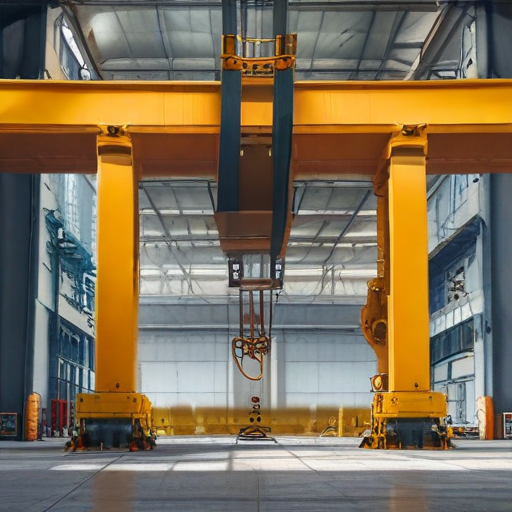
How to use “15 ton gantry crane”
Operating a 15-ton gantry crane requires attention to safety and proper procedures. Here’s a concise guide to help you use it effectively:
1. Pre-Operation Checks:
– Inspect the crane for any visible damage or wear.
– Ensure that all parts are well-lubricated and functioning.
– Verify that the load capacity is within the crane’s 15-ton limit.
2. Work Area Preparation:
– Clear the area of any obstacles.
– Mark off a perimeter to keep unauthorized personnel away.
– Make sure the ground is level and stable.
3. Load Preparation:
– Determine the weight of the load.
– Choose appropriate lifting slings or attachments.
– Securely attach the load to the crane hook, ensuring balanced weight distribution.
4. Operating the Crane:
– Use the control panel to raise the load slightly off the ground to test stability.
– Gradually lift the load to the desired height.
– Move the crane slowly and steadily to avoid swinging.
5. Maneuvering:
– Follow designated paths for moving the load.
– Avoid sudden stops or starts.
– Use a spotter for guidance if visibility is restricted.
6. Setting Down the Load:
– Lower the load slowly and steadily.
– Make sure the area where the load will be placed is clear and stable.
– Detach lifting slings or attachments once the load is securely on the ground.
7. Post-Operation:
– Return the crane to its designated parking area.
– Power down the crane and perform a final inspection.
– Report any issues or maintenance needs.
Safety Precautions:
– Always wear appropriate personal protective equipment (PPE).
– Never exceed the crane’s 15-ton capacity.
– Ensure all operators are trained and certified.
By following these steps, you can safely and efficiently use a 15-ton gantry crane for lifting and moving heavy loads.
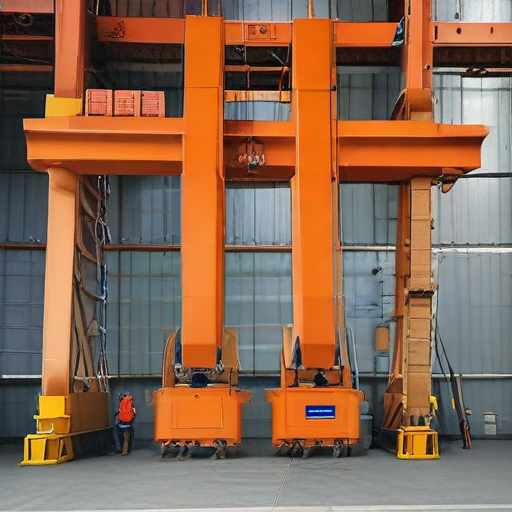
“15 ton gantry crane” Comparative Analysis
A 15-ton gantry crane is a versatile lifting solution for various industrial applications, such as manufacturing, construction, and shipping. This comparative analysis will focus on three key types: Fixed, Adjustable, and Portable gantry cranes.
Fixed Gantry Crane:
– Design: Rigid and non-adjustable.
– Strengths: High stability and lifting capacity. Optimal for repetitive lifting tasks in a confined area.
– Limitations: Limited flexibility. Relatively higher installation costs.
– Applications: Ideal for long-term projects with consistent lifting requirements, such as assembly lines.
Adjustable Gantry Crane:
– Design: Equipped with height and span adjustment features.
– Strengths: Versatility in applications, can accommodate various lifting heights and spans.
– Limitations: Slightly more complex to set up and adjust.
– Applications: Perfect for environments with variable lifting needs, such as repair shops and maintenance facilities.
Portable Gantry Crane:
– Design: Lightweight and often equipped with casters for easy movement.
– Strengths: High mobility, can be easily transported and repositioned.
– Limitations: Typically lower lifting capacity compared to fixed types.
– Applications: Suited for light to moderate lifting tasks that require crane mobility, such as construction sites and temporary installations.
Comparative Considerations:
– Cost: Fixed gantry cranes usually have higher initial costs due to permanent installation. Adjustable and portable cranes offer cost-efficiency for variable and temporary needs.
– Flexibility: Portable gantry cranes provide the highest level of flexibility, followed by adjustable cranes. Fixed cranes offer minimal flexibility but excel in stability and capacity.
– Convenience: Portable cranes are the easiest to maneuver. Adjustable cranes balance flexibility and capacity, while fixed cranes are best for static, heavy-duty tasks.
In conclusion, the choice between these types depends heavily on project specificity, required mobility, and budget constraints.
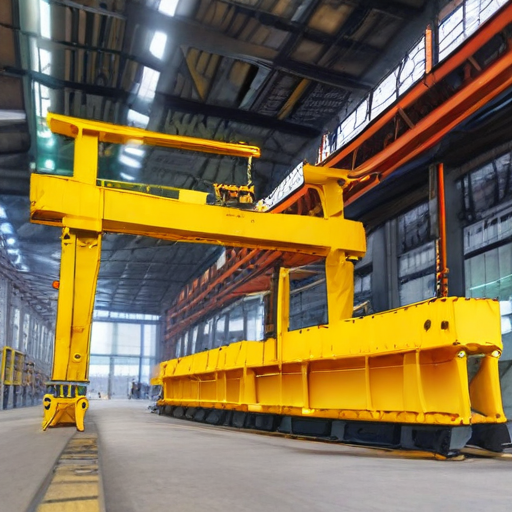
“15 ton gantry crane” Warranty and Support
Warranty and Support for 15 Ton Gantry Crane
When you invest in a 15-ton gantry crane, comprehensive warranty and support services are crucial for ensuring long-term performance and reliability. Typically, reputable manufacturers offer warranties ranging from 1 to 2 years. These warranties generally cover defects in materials and workmanship but do not usually include wear-and-tear or damage resulting from misuse or improper maintenance.
Warranty Details:
1. Duration: Commonly 1-2 years.
2. Coverage: Defects in materials and workmanship.
3. Exclusions: Normal wear-and-tear, misuse, improper maintenance, and unauthorized modifications.
Support Services:
1. 24/7 Customer Service: Offers round-the-clock assistance for troubleshooting and inquiries.
2. Installation Assistance: Professional setup and installation guidance to ensure the crane is properly configured.
3. Regular Maintenance Checks: Preventive maintenance programs to preserve the crane’s operational efficiency.
4. Spare Parts Availability: Ready access to original spare parts to minimize downtime.
5. Training Programs: Operator and safety training to ensure the crane is used efficiently and securely.
6. On-Site Support: Technicians can be dispatched for on-site repairs, inspections, and troubleshooting.
Additional Benefits:
1. Extended Warranty Options: Some manufacturers offer the option to purchase extended warranties for added peace of mind.
2. Upgrade Services: Opportunities to upgrade or retrofit the crane with the latest technology.
Ensure you read the warranty terms and support service details thoroughly before purchase to understand the scope and limitations fully. Opting for a crane from a well-established manufacturer with robust support services can significantly impact the longevity and reliability of your investment. Always maintain a log of all service and maintenance activities to preserve warranty eligibility.
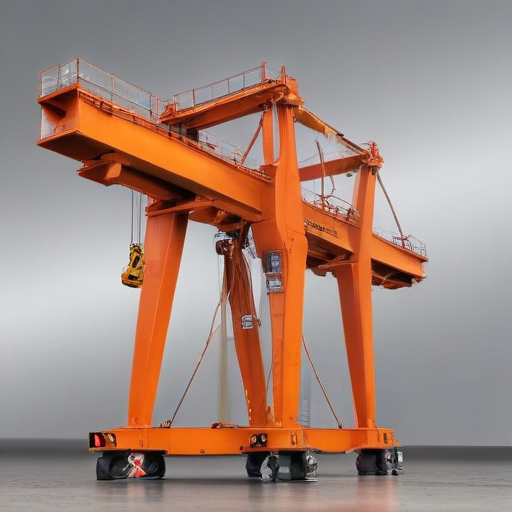
List “15 ton gantry crane” FAQ
15 Ton Gantry Crane FAQ
1. What is a 15 Ton Gantry Crane?
A 15 ton gantry crane is a heavy-duty lifting device used to move and lift loads up to 15 tons. It typically consists of a single or double girder supported by freestanding legs that move on wheels or along a track.
2. Where can it be used?
These cranes are commonly used in warehouses, shipping yards, construction sites, and manufacturing facilities for tasks such as loading, unloading, and moving heavy items.
3. What are the key features?
Key features often include adjustable height and span, electric or manual operation, portability, and the ability to customize for specific applications.
4. What types are available?
There are various types including single girder, double girder, portable, and semi-gantry cranes. Each type serves different purposes based on the required application.
5. How is it powered?
Power options include electric motors and manual systems. Electric-powered cranes are more common for heavy lifting and frequent use, while manual models are used for lighter loads and occasional use.
6. What safety features are included?
Safety features may include emergency stop buttons, overload protection, limit switches, and anti-collision systems to ensure safe operation.
7. How is it maintained?
Regular inspections, lubrication of moving parts, and timely replacements of worn-out parts are essential for maintaining the crane’s efficiency and safety.
8. Can it be customized?
Yes, many manufacturers offer customization options for size, capacity, and additional features to suit specific needs.
9. What are the installation requirements?
Installation usually requires a flat, stable surface and may involve assembly by skilled technicians. Some models also need electrical hookups.
10. What is the cost?
The cost varies widely depending on the type, features, and customization options. It’s best to get a quote from manufacturers for precise pricing.
11. How long does it last?
With proper maintenance, a 15 ton gantry crane can last between 20 to 30 years.
12. Are there any legal requirements?
Yes, compliance with local safety and operational regulations is mandatory. Always check with relevant authorities.
13. What are the warranty terms?
Warranties differ by manufacturer but typically cover defects in materials and workmanship for a specified period.
14. Can it be relocated?
Portable models can be relocated, while fixed models require disassembly and reassembly.
15. What training is needed?
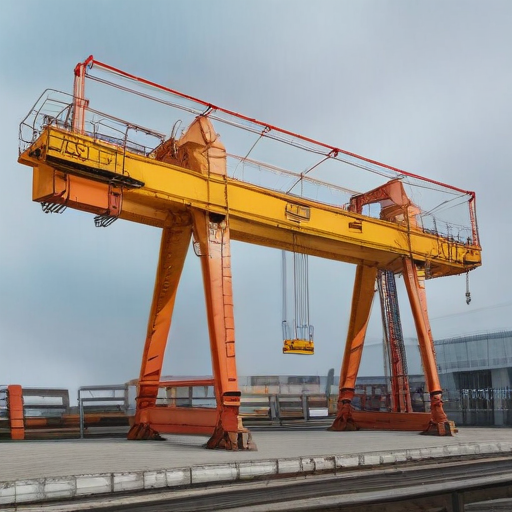
Top 10 FAQ with answer about 15 ton gantry crane for Buyer Sourcing from China
Certainly! Here are the top 10 frequently asked questions (FAQ) with answers about sourcing a 15-ton gantry crane from China:
1. What is the lead time for a 15-ton gantry crane?
– Typically, the lead time ranges from 4 to 12 weeks. It depends on the manufacturer’s production schedule and customization requirements.
2. What are the available configurations for a 15-ton gantry crane?
– Common configurations include single girder and double girder types. It can be stationary or mobile (on rails or rubber tires).
3. What is the cost of a 15-ton gantry crane?
– Costs vary based on design, materials, and additional features. Generally, prices range from $20,000 to $50,000 or more.
4. Are Chinese gantry cranes compliant with international standards?
– Many Chinese manufacturers comply with international standards such as ISO, CE, and ANSI. Always verify compliance during the procurement process.
5. Can the crane be customized according to specific requirements?
– Yes, most manufacturers offer customization options for height, span, lifting speed, and additional features like anti-sway technology.
6. What kind of warranty and after-sales service is offered?
– Warranties typically range from 1 to 2 years. After-sales services often include installation support, training, and maintenance services.
7. How is shipping and delivery handled?
– Cranes can be shipped via sea freight, with delivery times varying by destination. Clearing customs and local delivery must be planned in advance.
8. What about installation and commissioning?
– Manufacturers may offer installation services or provide detailed instructions. Some also provide on-site engineering support for commissioning.
9. What is the average lifespan of a 15-ton gantry crane?
– With proper maintenance, the lifespan can exceed 20 years. However, it depends on usage intensity and environmental conditions.
10. Are spare parts readily available?
– Reputable manufacturers usually provide a list of spare parts and their availability. Many also maintain inventory for quick dispatch.
By addressing these common queries, buyers can better navigate the complexities of sourcing a 15-ton gantry crane from China efficiently.

